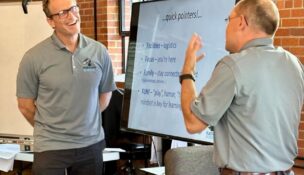Dominion amends alternate SCANA proposal
Melinda Waldrop //November 20, 2018//
Dominion Energy has filed a revision to its alternative proposal to acquire SCANA Corp. that the Virginia-based company says will lower bills paid by the average S.C. Electric & Gas customer to rates slightly below those established after a temporary 15% rate reduction took effect in August.
In a filing with S.C. Public Service Commission, Prabir Purohit, Dominion’s director of mergers and acquisitions and financial analysis, detailed a “levelized plan” that would provide more than $2 billion in refunds over a 20-year recovery period. The plan would refund approximately $1.032 billion to customers over those 20 years, with another $1.007 billion going to refund money already collected by SCE&G from its 730,000 customers under the Base Load Review Act.
The BLRA is a 2007 state law Cayce-based SCE&G parent company SCANA used to request and receive nine rate increases related to the construction of now-abandoned twin nuclear reactors at the V.C. Summer Nuclear Power Station in Fairfield County. SCE&G and project co-owner Santee Cooper poured $9 billion into the decades-long construction of the reactors, with SCE&G collecting $2 billion in project-related costs from its ratepayers, before abandoning the project in July 2017 after a series of rising costs and mounting delays and three months after contractor Westinghouse declared bankruptcy.
Under terms of the revision, SCE&G would establish a regulatory liability for refunds of money previously collected to be credited to customers over 11 years.
Tables included in today's filing show that the revision, inclusive of project costs amortization and refunds from the Tax Cuts and Jobs Acts of 2017, would lower the average SCE&G customer’s bill to $125.26 a month. That would be just below the current monthly bill average of $125.34 and represent a reduction of approximately 15% from May 2017, when the average SCE&G ratepayer shelled out $147.53. That was before the S.C. Legislature and the PSC ordered a temporary 15% rate reduction in June as part of a new law that also repealed the BLRA and strengthened the regulatory powers of the PSC and the Office of Regulatory Staff.
The PSC is conducting evidentiary hearings, which began Nov. 1, to establish a permanent rate for SCE&G customers and to issue a ruling on the fate of the proposed $14.6 billion SCANA/Dominion merger.
In January, Dominion proposed a deal that would cut SCE&G bills by 7% and give customers an average upfront refund of $1,000. Legislators weren’t easily sold, however, even as the potential merger cleared other regulatory hurdles.
In October, Dominion proposed an alternate plan that would scrap the upfront refund but up the permanent rate reduction to 14%. Today's PSC filing presented a modification, also referred to as “Plan B-L,” to that alternative.
“As we have always said, we believe we can provide benefits to customers through the merger that will not otherwise be available,” Purohit said in his testimony. “And we have also said that, while we would still support the (original proposal) with the upfront cash refund, we remain open to moving elements of the plan around to optimize the plan for customers and to be responsive to the preferences of stakeholders and the commission. … The Plan B-L, in particular, is being offered in response to suggestions from key stakeholders that the temporary rate (passed in June) is an optimal target, and one which has, to date, withstood legal challenge.”
A federal judge twice denied SCE&G requests for an emergency injunction to stop the temporary rates from going into effect.
The new filing also contained a list of “additional merger commitments” that Dominion and SCE&G are willing to accept, including extension of SCANA employee pay protection for non-executives to July 1, 2020. SCANA senior management bonus payments would be charged to the nuclear project and not included in future service costs, while legal expenses associated with both the failed project and the merger would not be included in base rates or service costs.
SCE&G’s president would also continue to be a resident of South Carolina with his or her primary office in Cayce, according to the filing.
Dramatic day
Dominion lawyer Joseph Reid passed out copies of the filing to PSC members during a contentious day of testimony before the commission, which is expected to rule on SCE&G rates and the potential merger by Dec. 21.
Tuesday’s main event was a long-awaited appearance by Carlette Walker, SCANA’s former vice president of Nuclear Finance Administration whose recently unsealed PSC testimony claimed that ex-SCANA CEO Kevin Marsh put her on medical leave after she expressed concerns about the nuclear project. Walker also testified in an April 24 deposition that SCANA filed misleading testimony about the project’s cost with state regulators under her name.
Walker reiterated those claims, saying she was “the victim of a conspiracy of five SCANA executives to run me out of the company” because she disputed a decision by SCE&G to present a contractor estimate to the PSC in March 2015 that showed the V.C. Summer project was exceeding costs by $698 million instead of an internal analysis that found the project would cost an additional $1.2 billion. She blamed Marsh, current CEO Jimmy Addison, former Executive Vice President Steve Byrne, former Senior Vice President Marty Phalen and Chief Nuclear Officer Jeff Archie for creating a climate that led to health problems including a heart attack.
“Kevin Marsh was nothing more than a worthless liar because he was only seeking a way to silence me. … I hold Kevin Marsh, Jimmy Addison, Steve Berm, Marty Phalen and Jeff Archie all responsible for what happened to me and what happened at that project,” Walker told the PSC. “Their ego, greed and lack of integrity have cost ratepayers, stockholders and employees billions of dollars.”
SCE&G lawyer David Balser sought to discredit that testimony by introducing several emails inviting Walker to and referencing meetings concerning her PSC testimony, though Walker said at least one such email referred to the testimony of a SCANA senior executive. Balser also asked Walker about an email she sent to SCANA Vice President of Human Resources Annmarie Higgins saying that the serious illness of Walker’s husband “has created a tremendous amount of stress in my life” and that the V.C. Summer project, while a stressful job, “has not created my health issues.”
Walker said she had lied to Higgins in that email because “Miss Higgins was part of the conspiracy,” sitting in on what Walker had requested to be confidential meetings with SCANA executives.
“Miss Higgins is known in the company as a witch,” Walker said.
Balser also brought up an email from Walker to Marsh asking for a chance to apologize for behavior and “how I have lost my perspective” in “allowing a personal crisis to consume me and take up a war against the very people that afforded me a career that exceeded anything in my wildest dreams.”
“That is what you call creative writing, because that is what Jimmy Addison wanted to hear. … If you’ve got five executives trying to beat you up and run you out of the company, that is what you have to revert to,” Walker said.
Former SCE&G engineer Ken Browne also testified Tuesday, saying that while he felt he had contributed to saving the doomed project money, its failure haunted him.
“I could not escape the guilt knowing that I had participated in what was sure to become the largest financial catastrophe in the state,” Browne said, choking up.
i

















